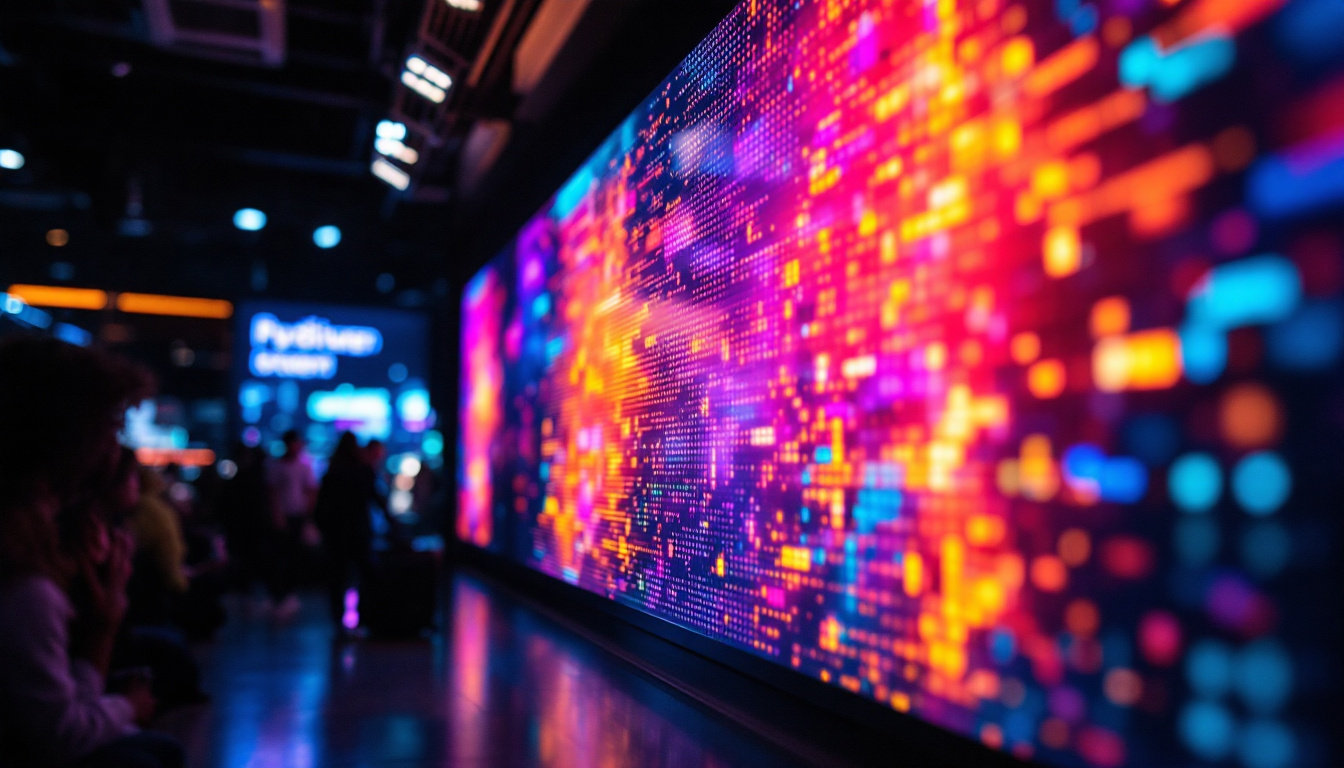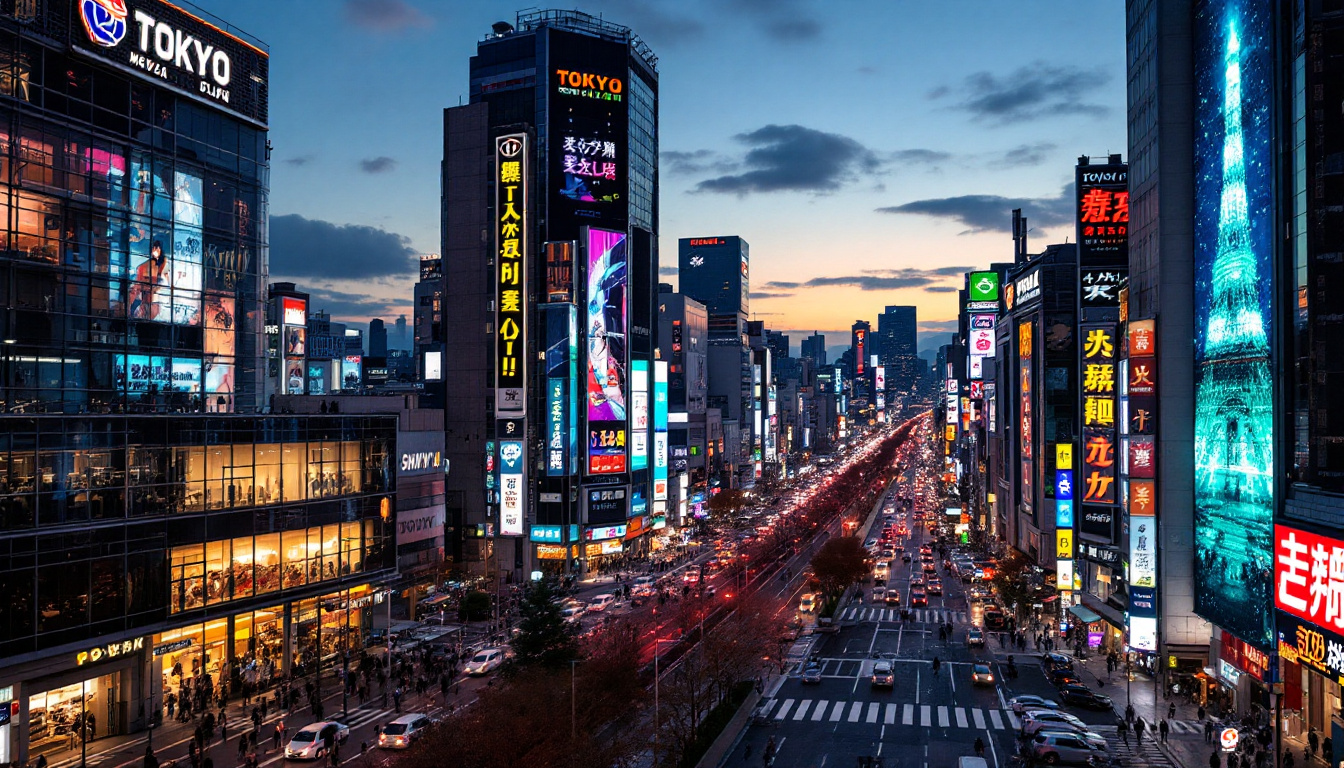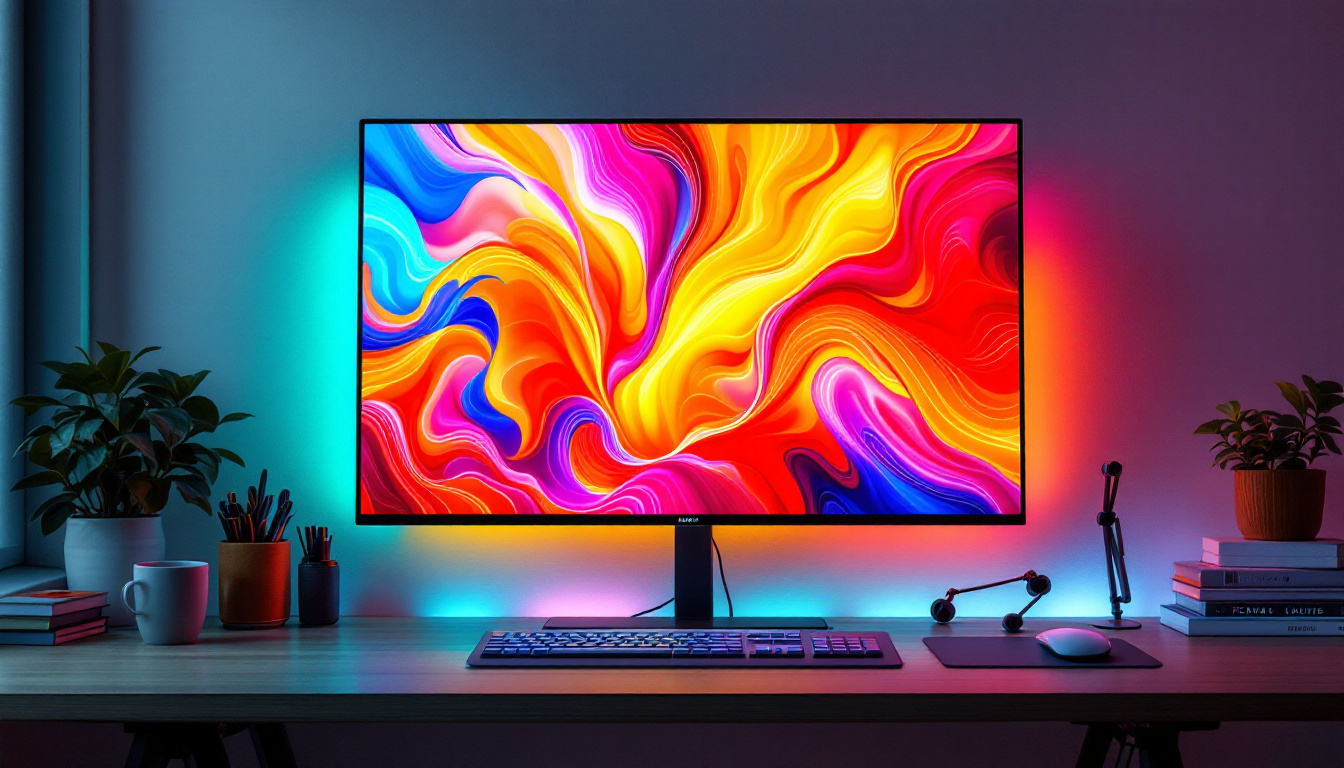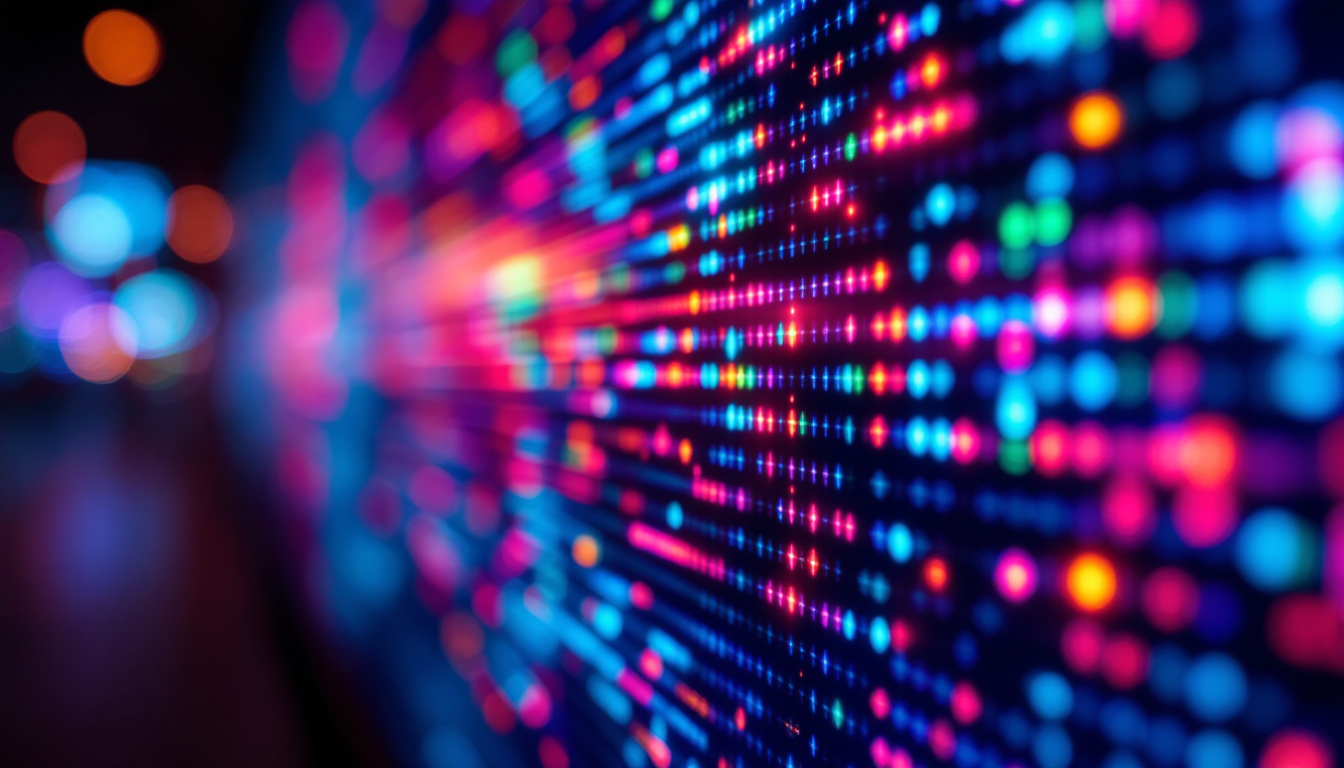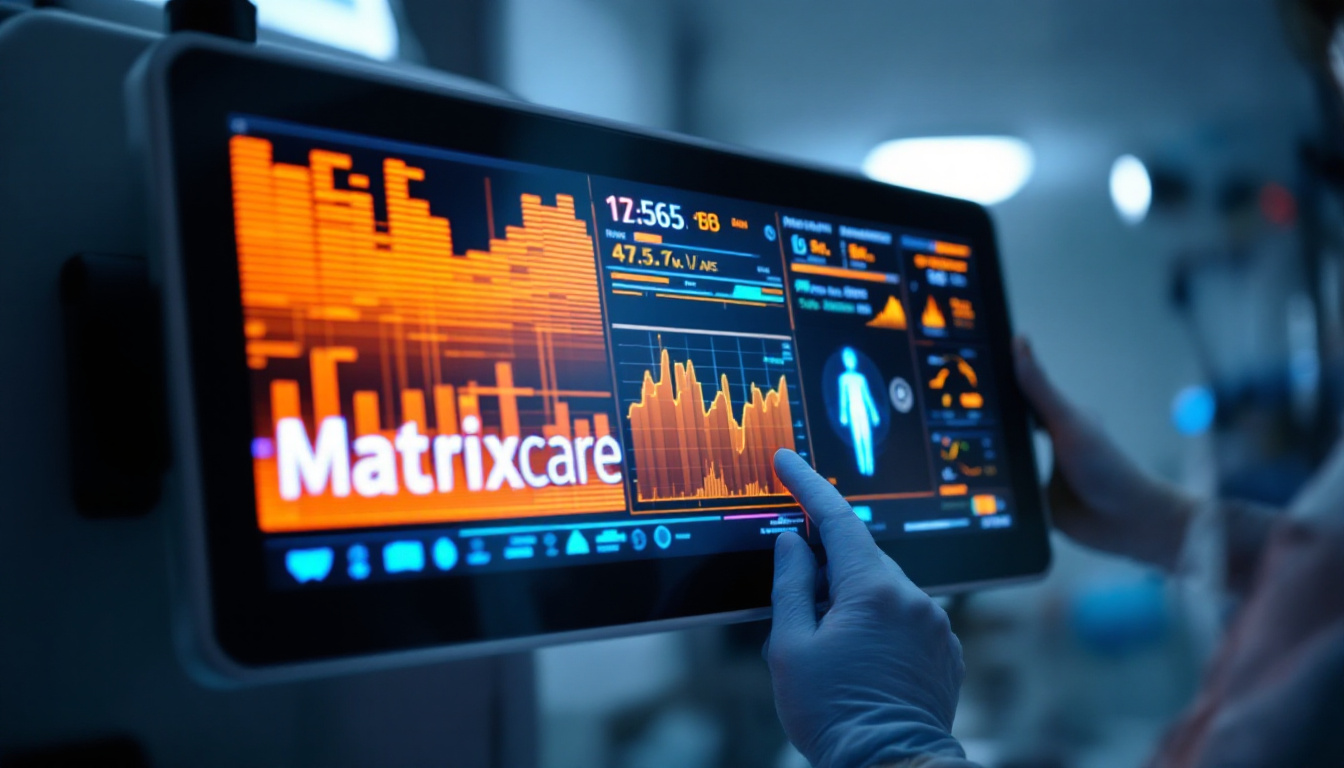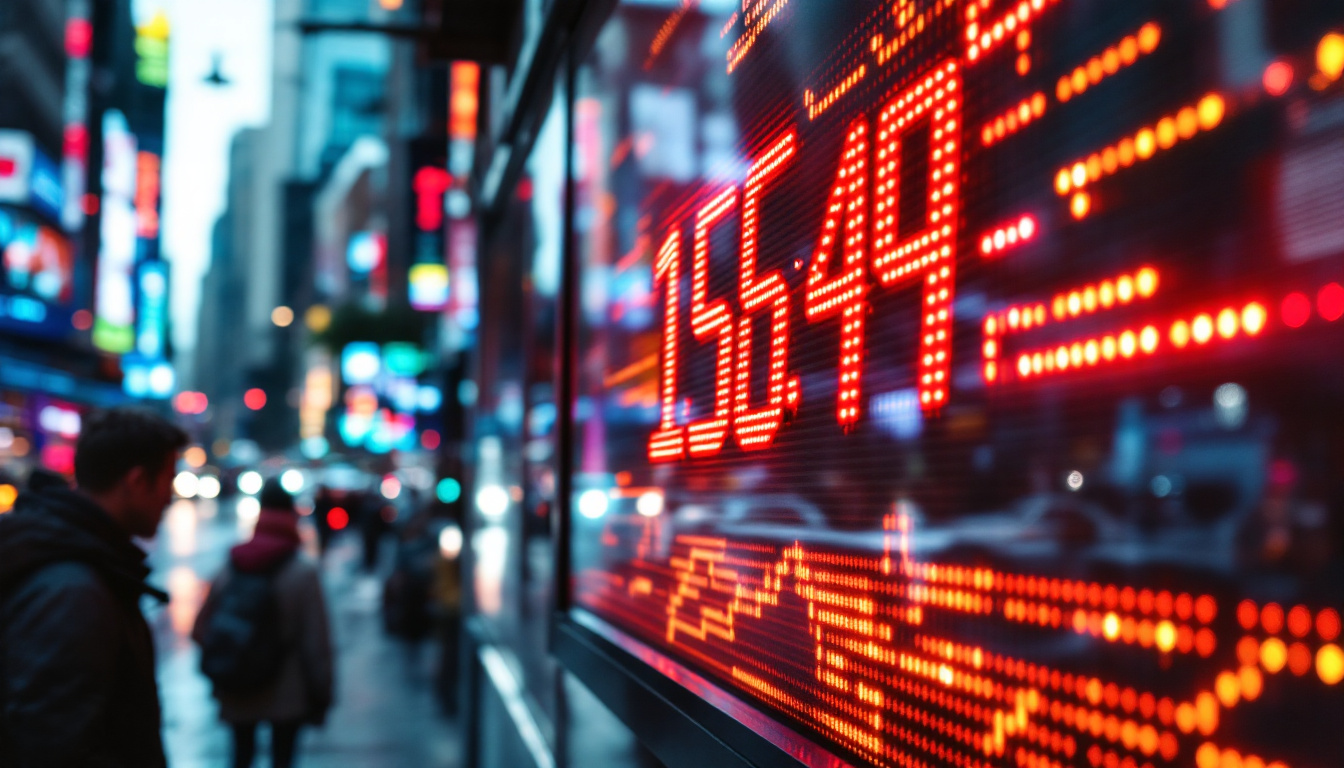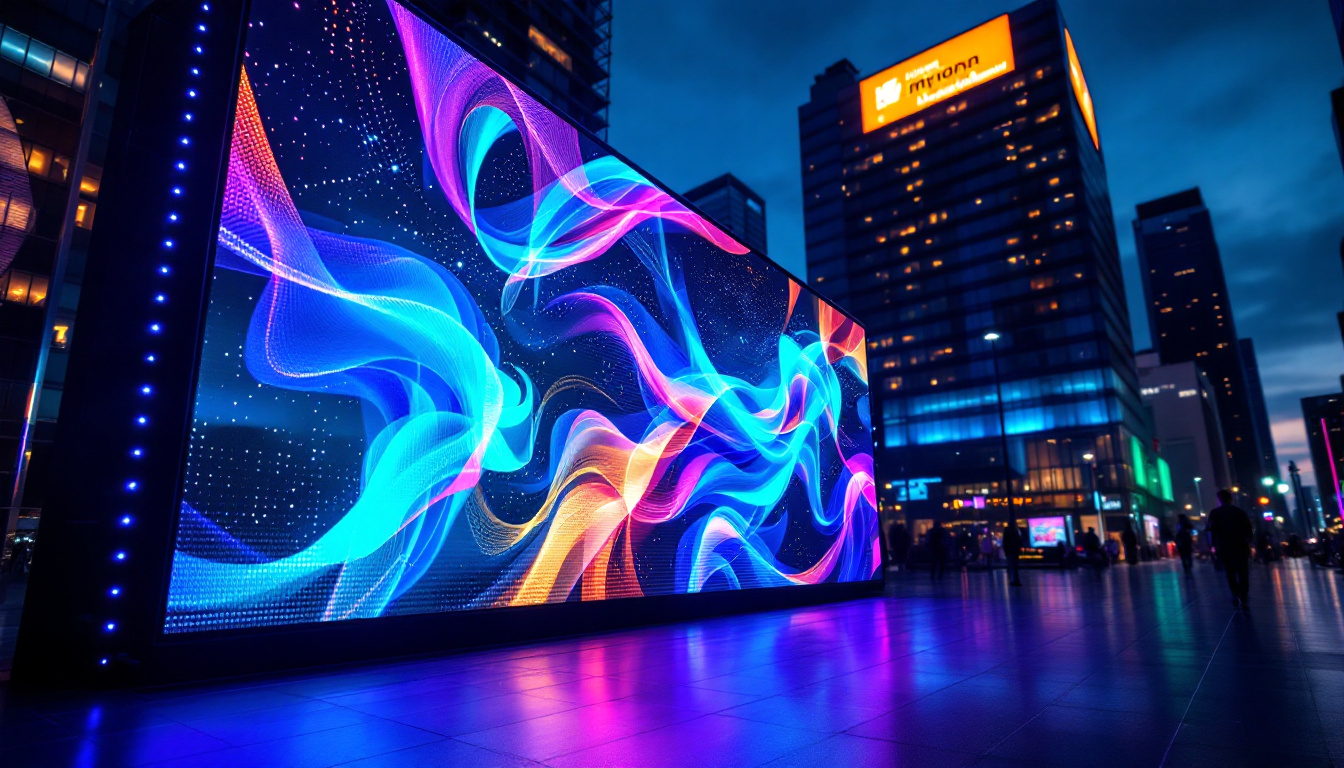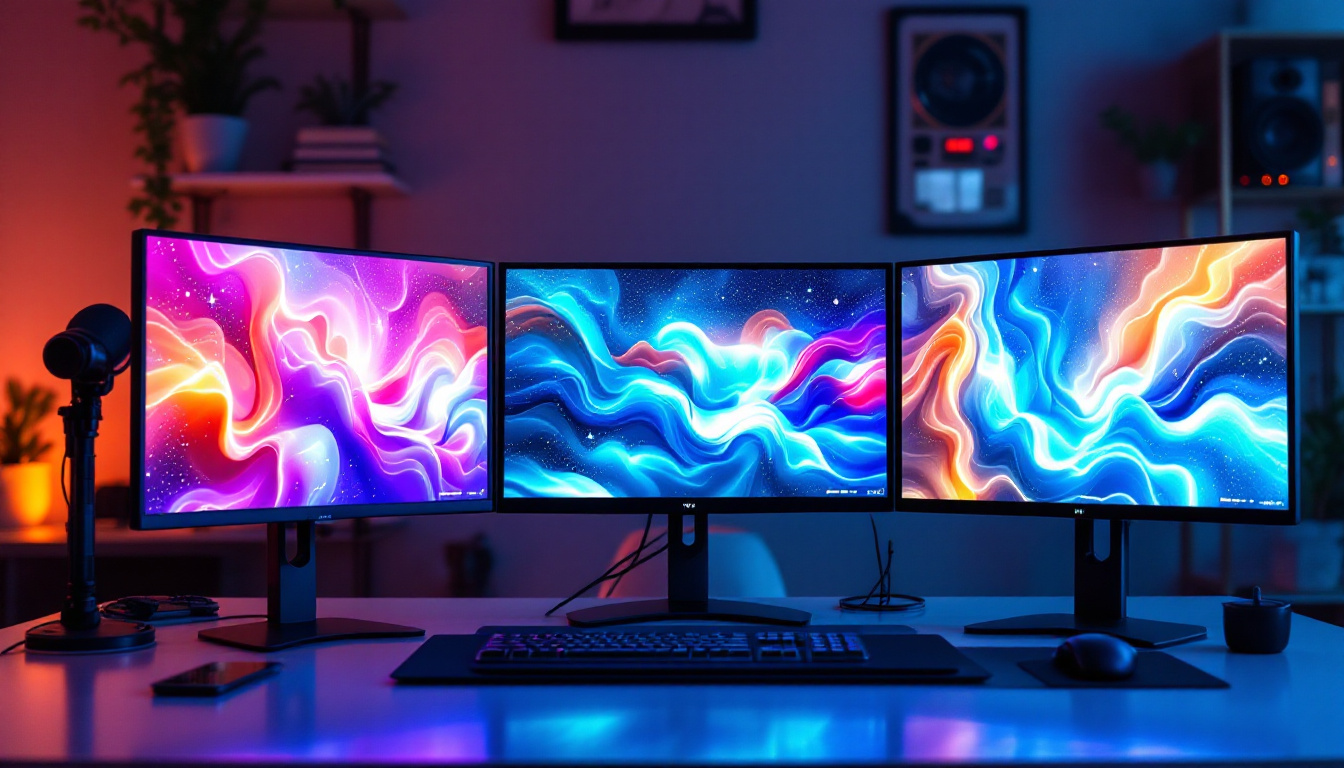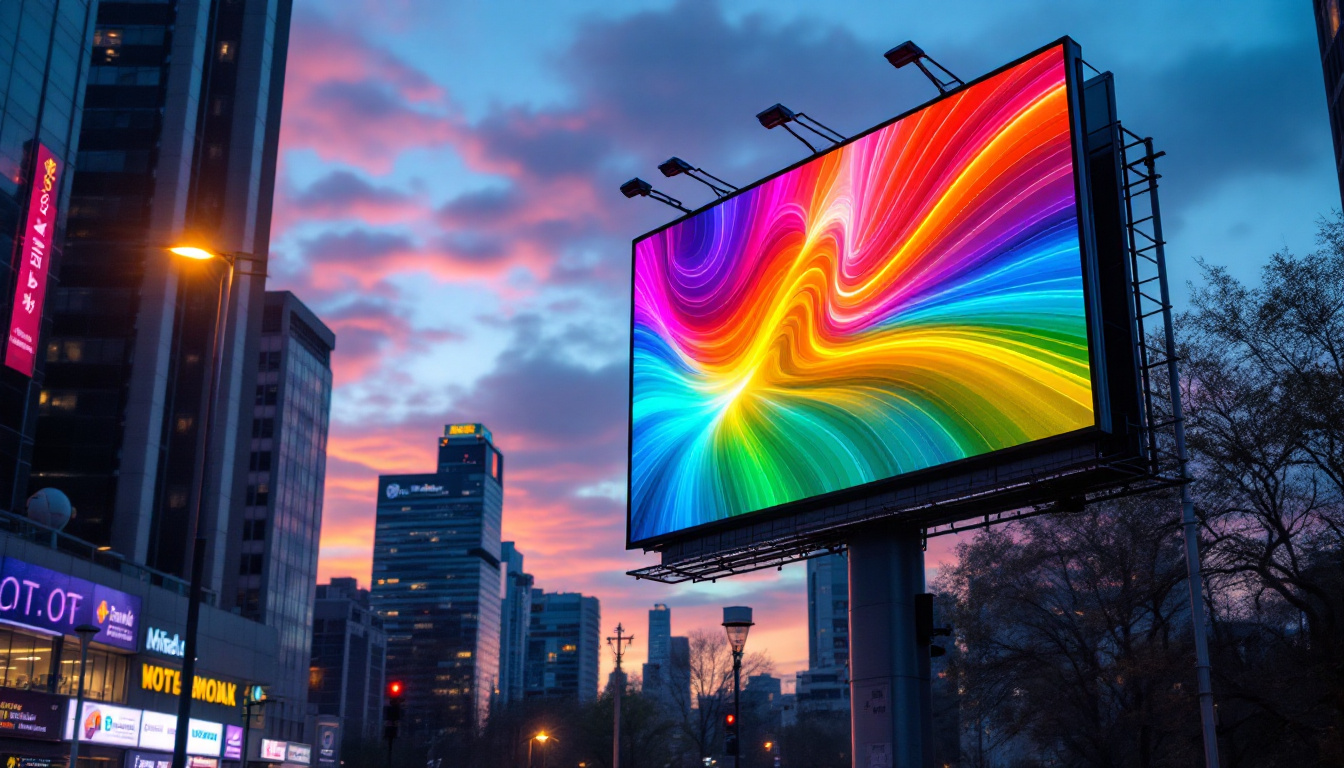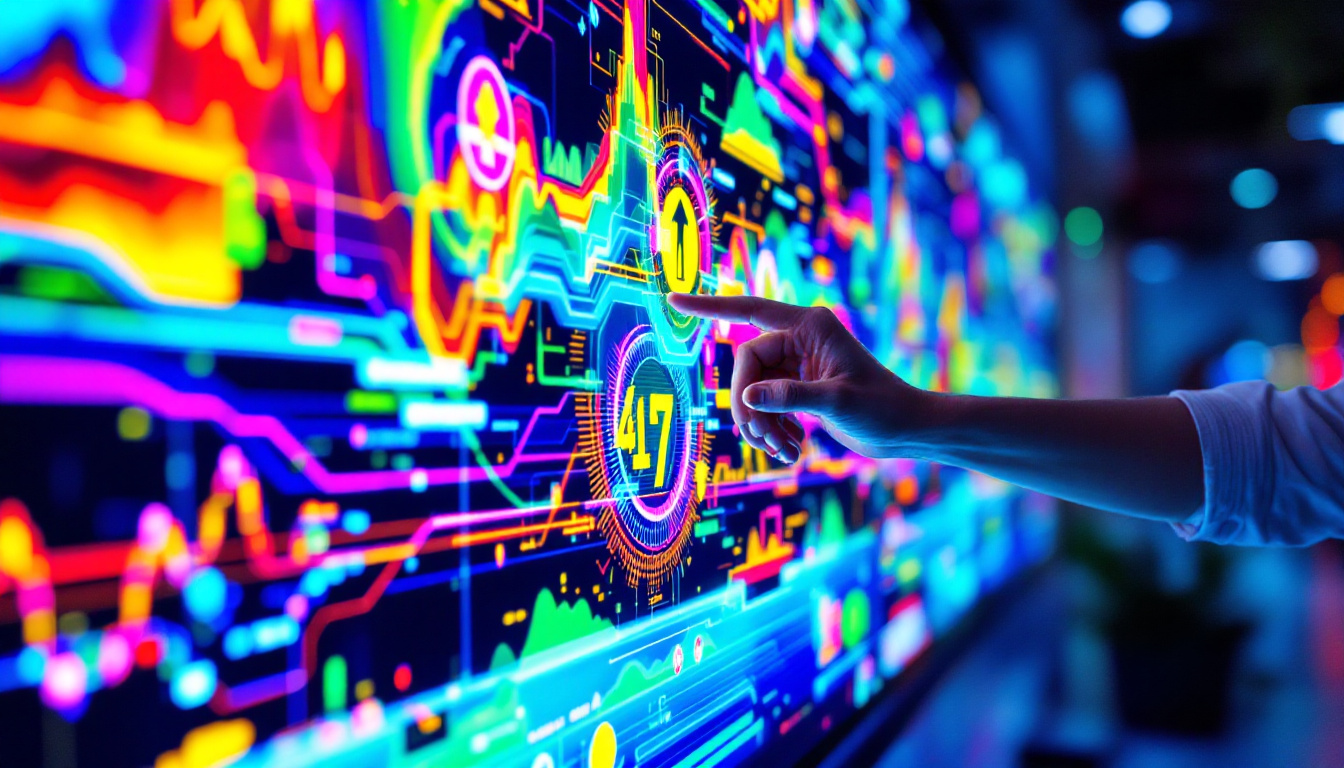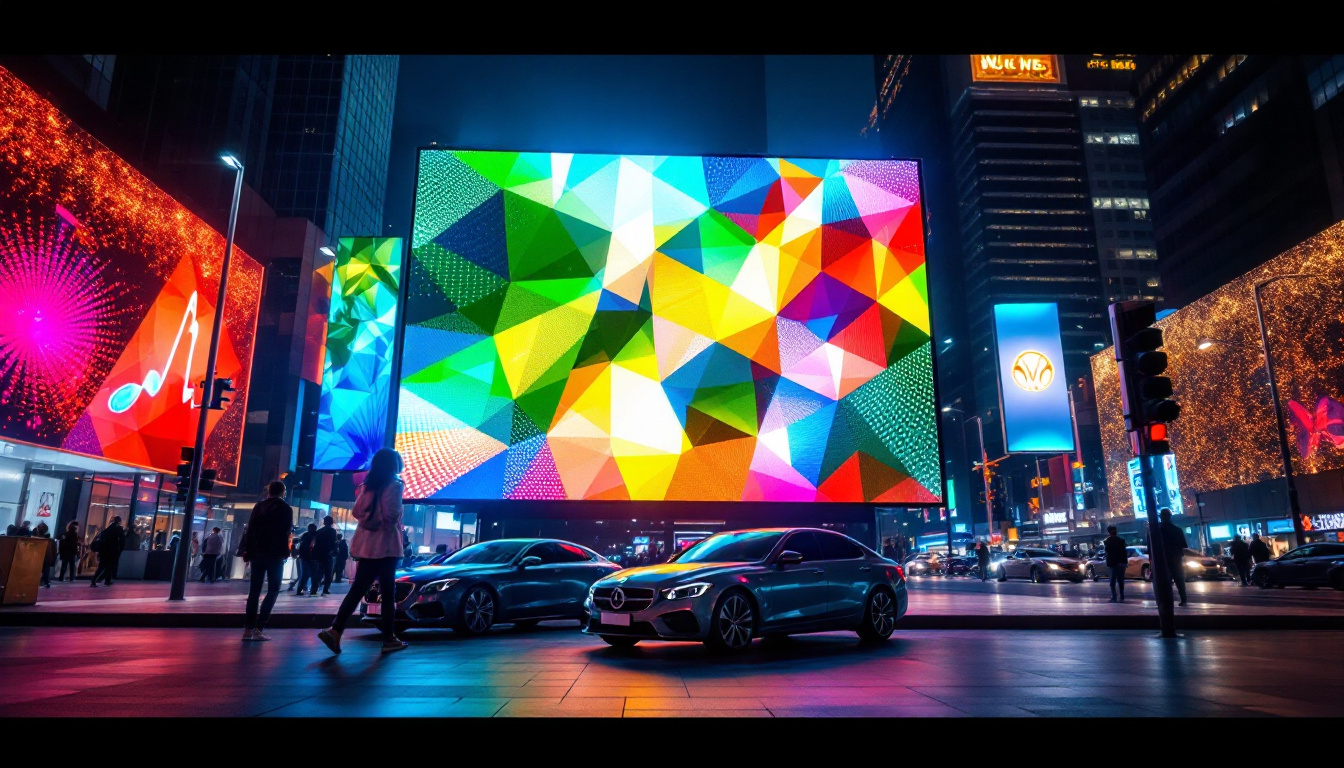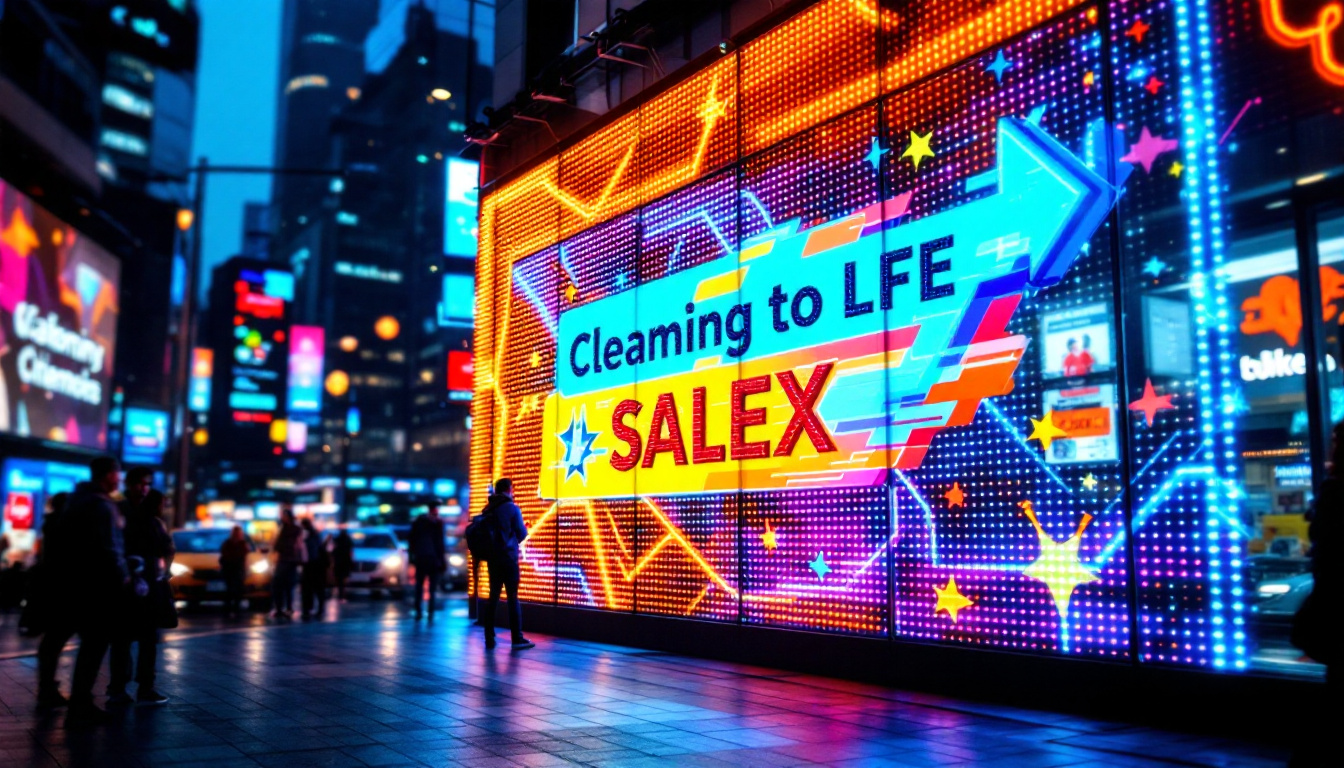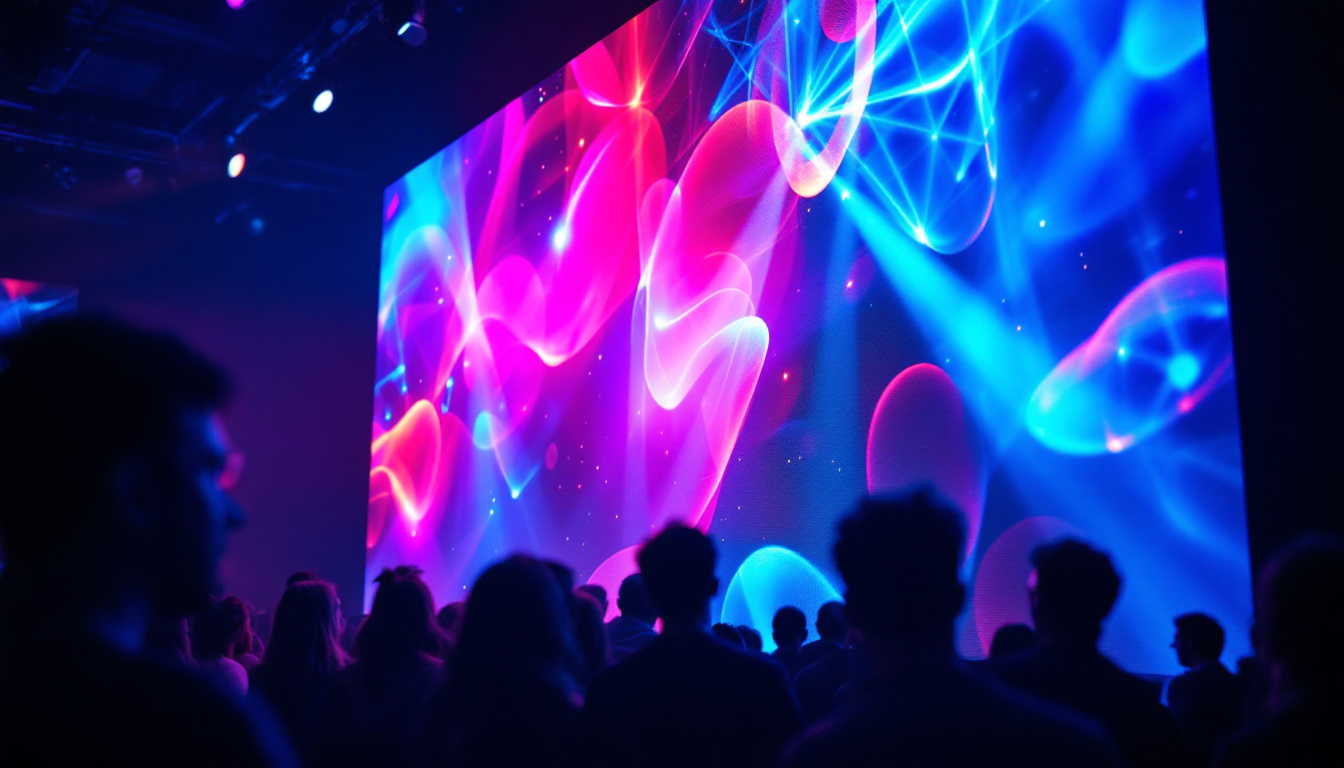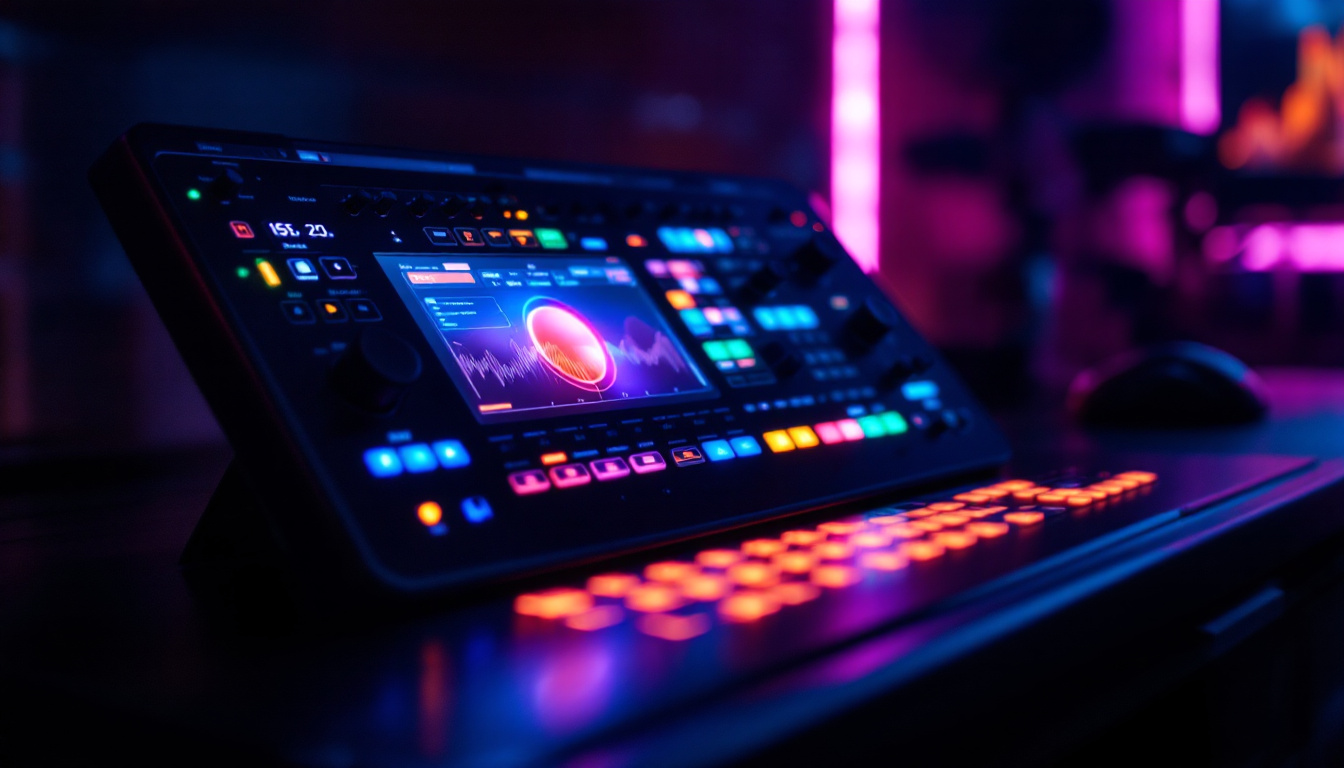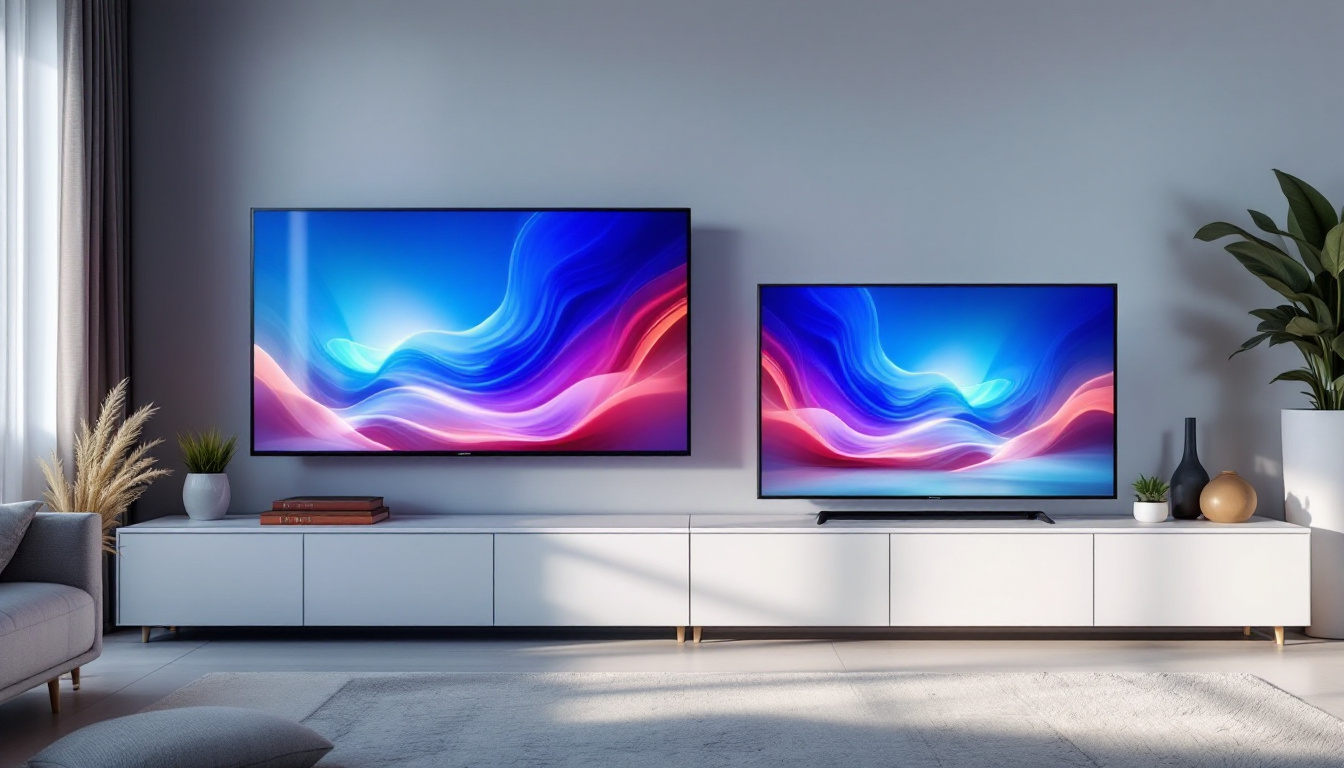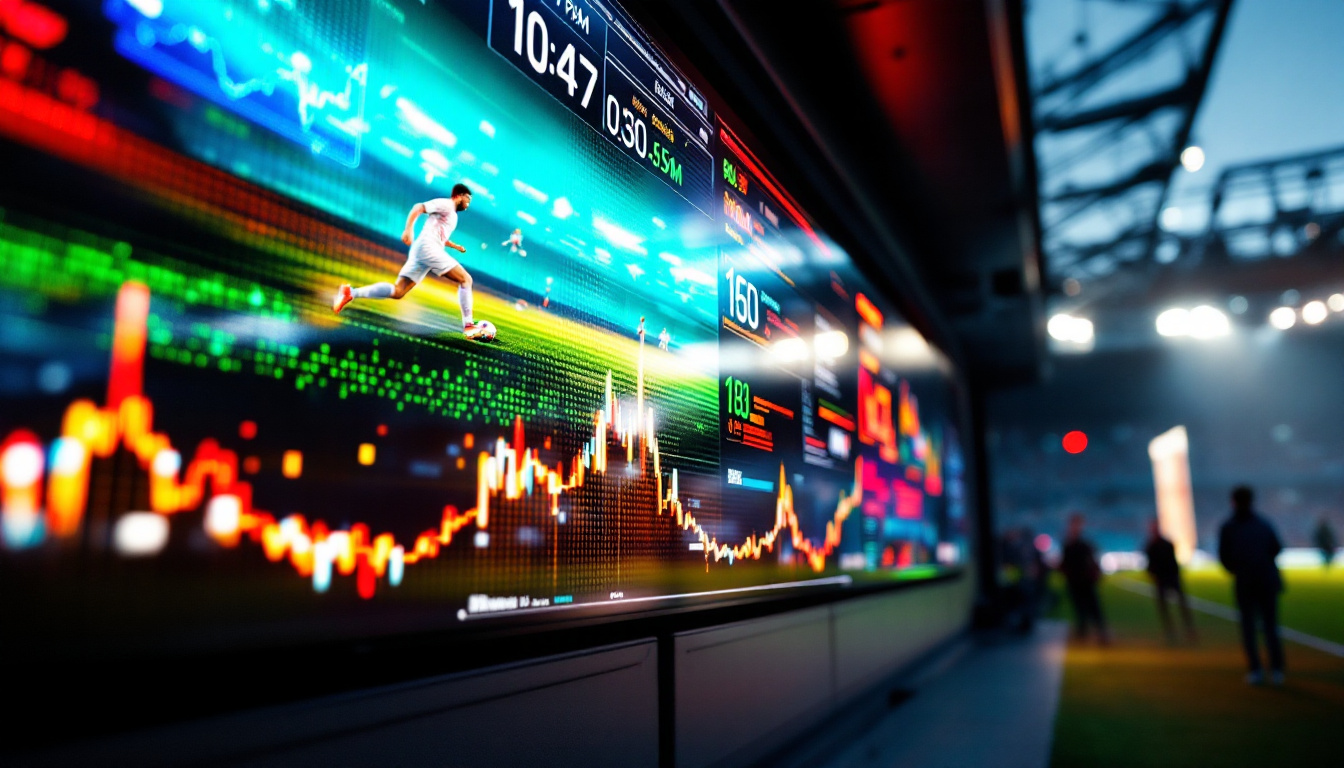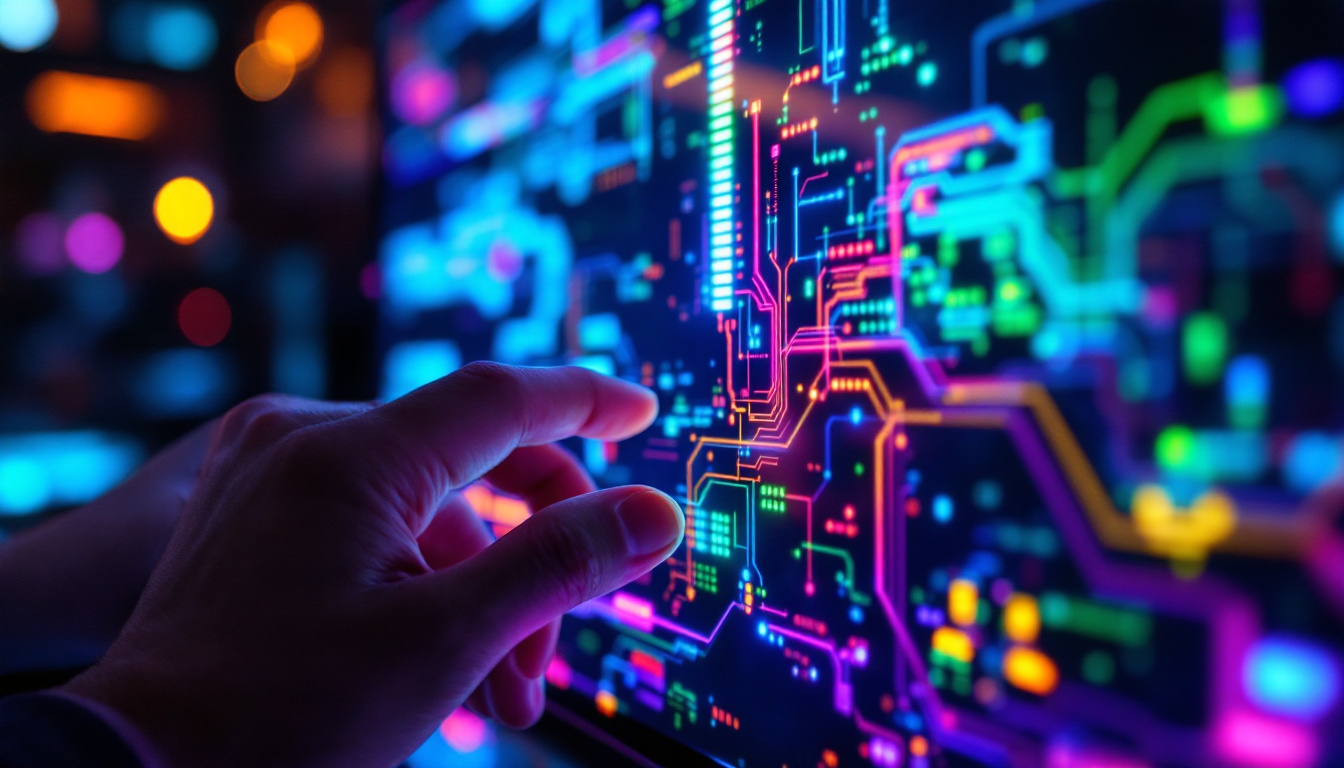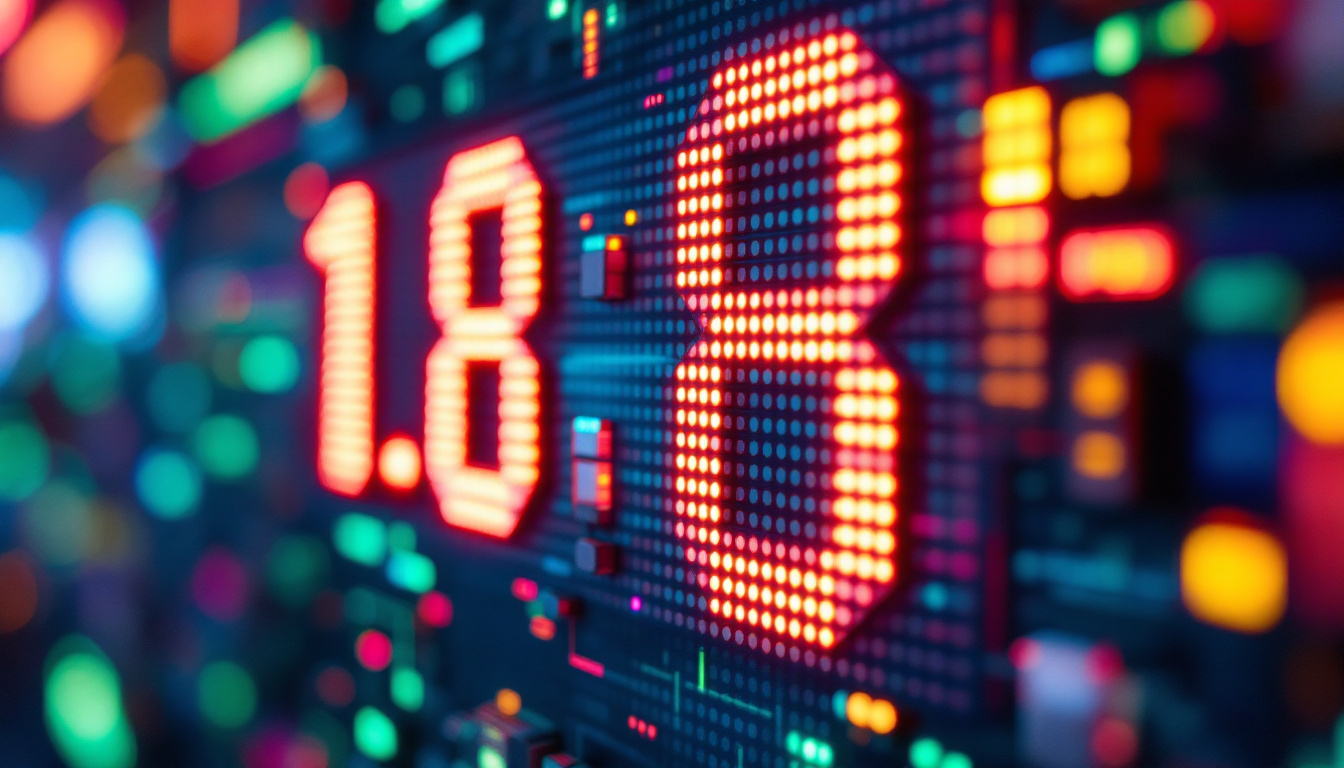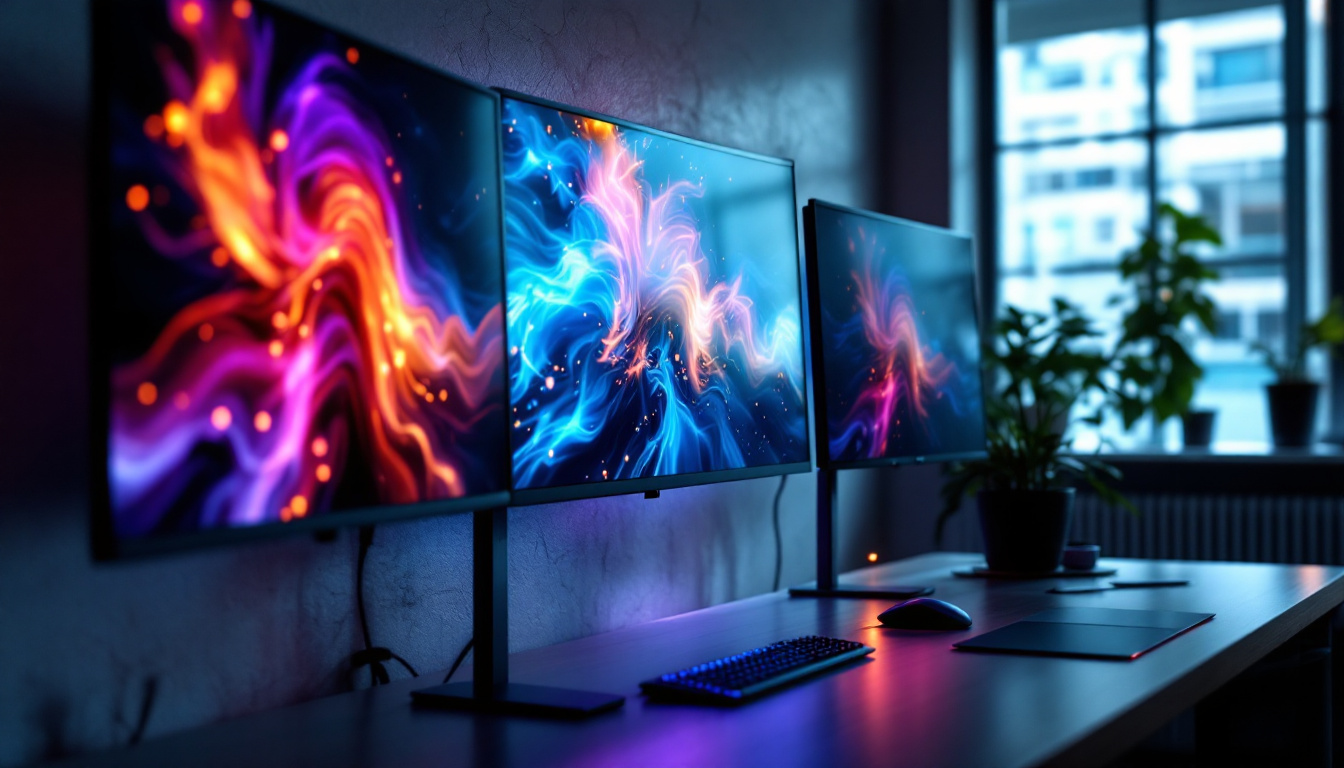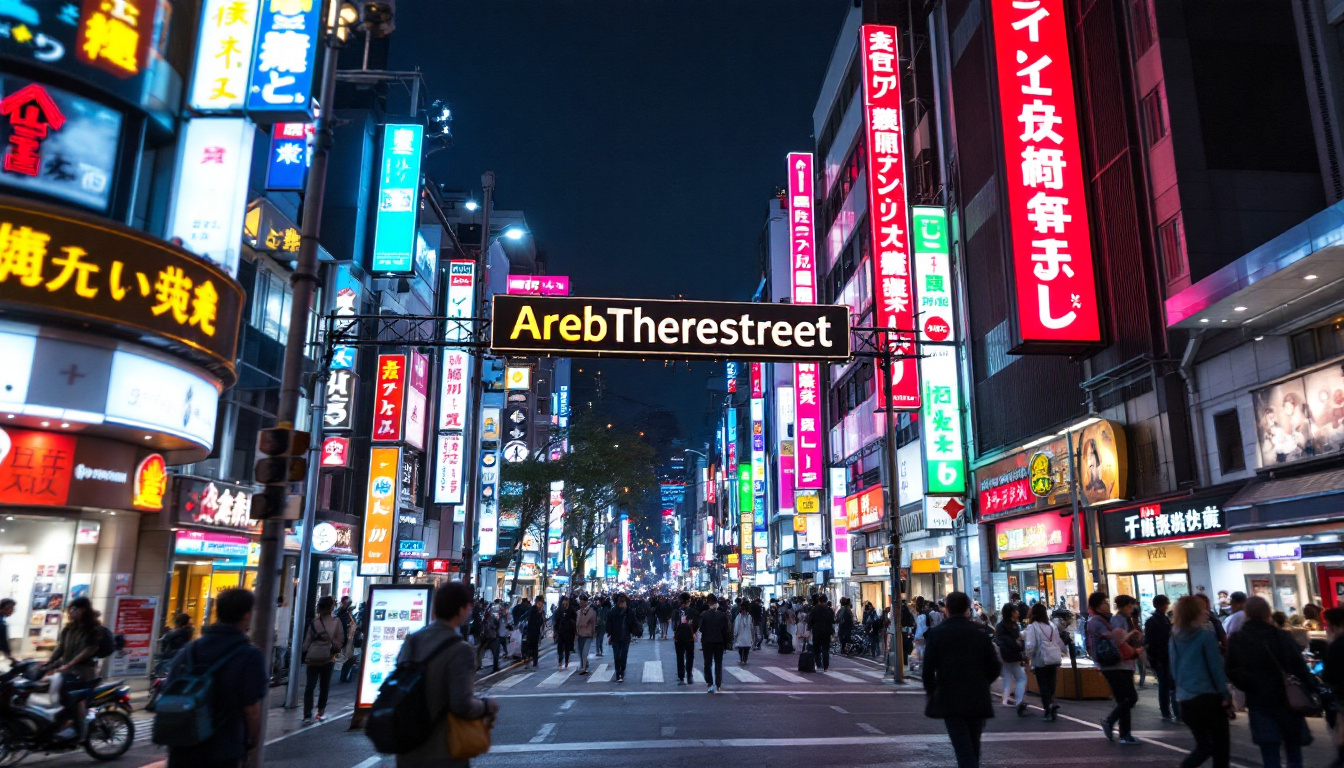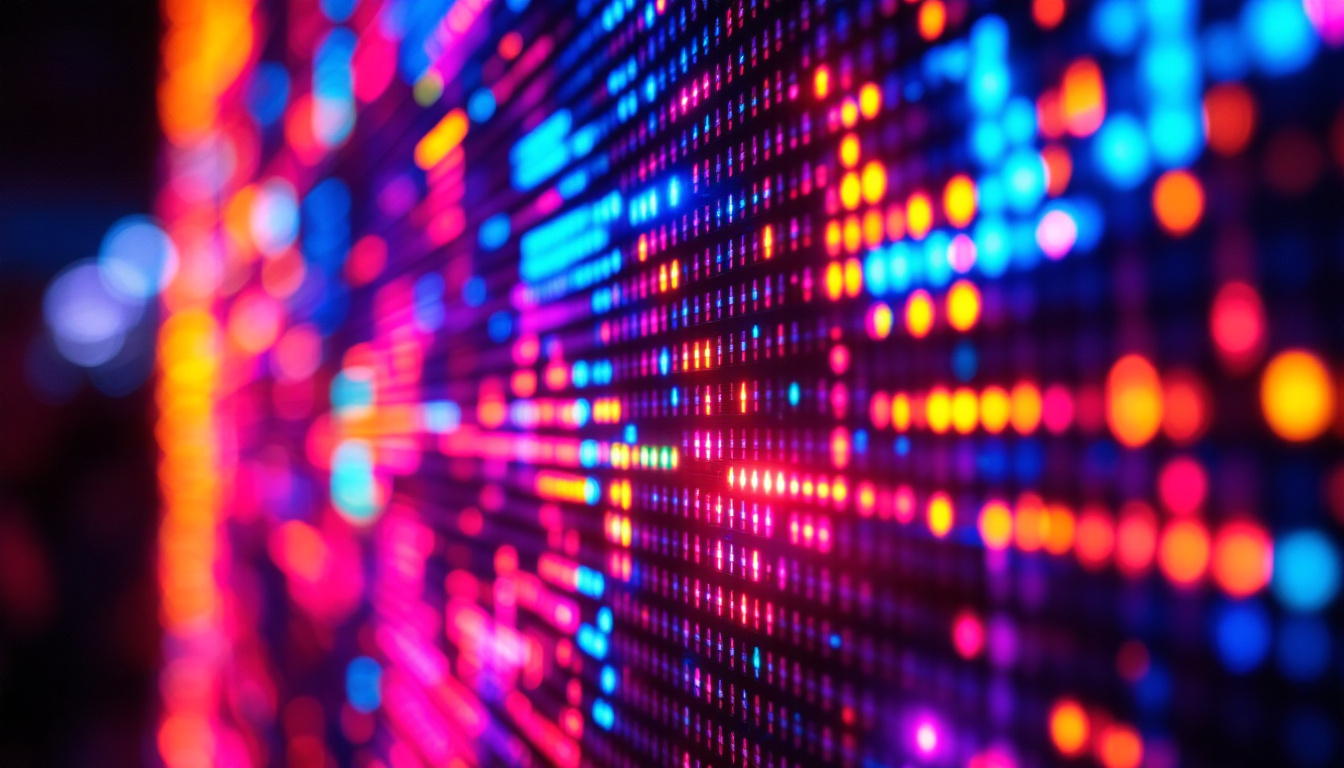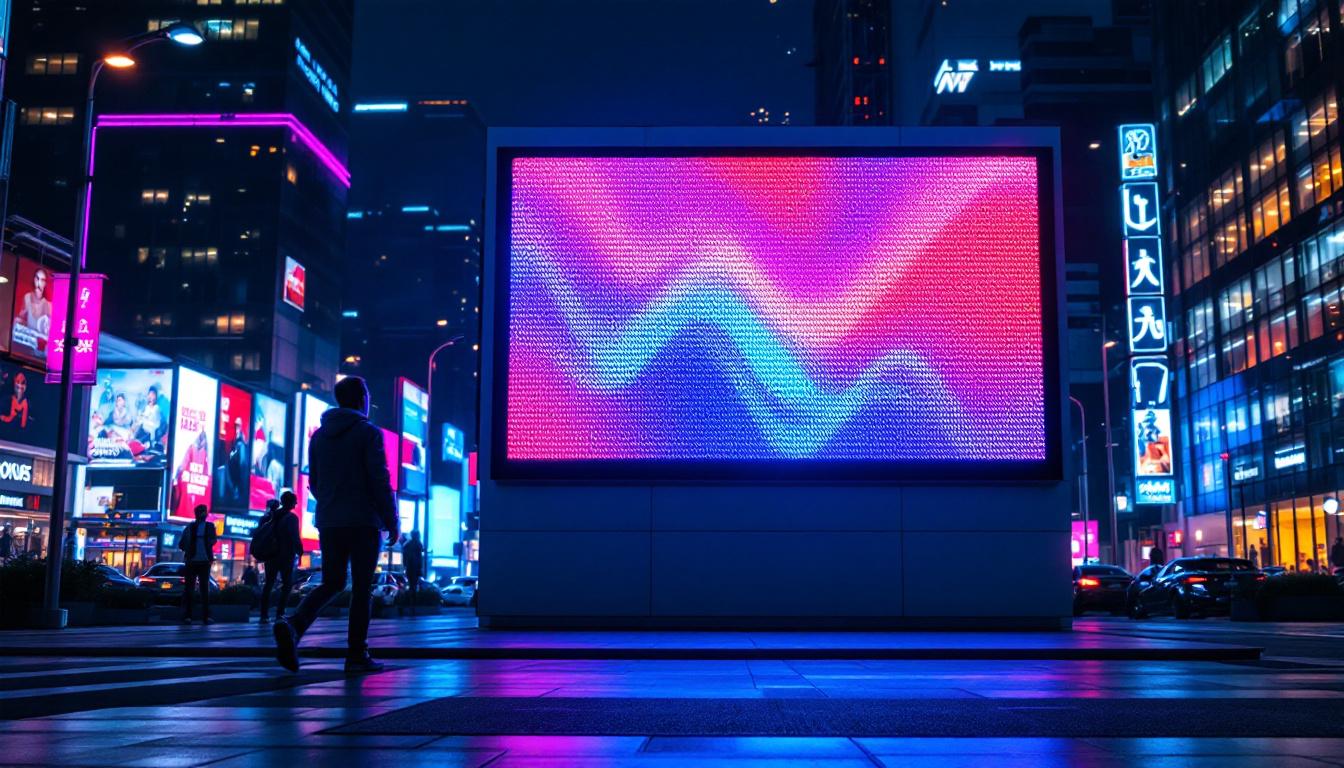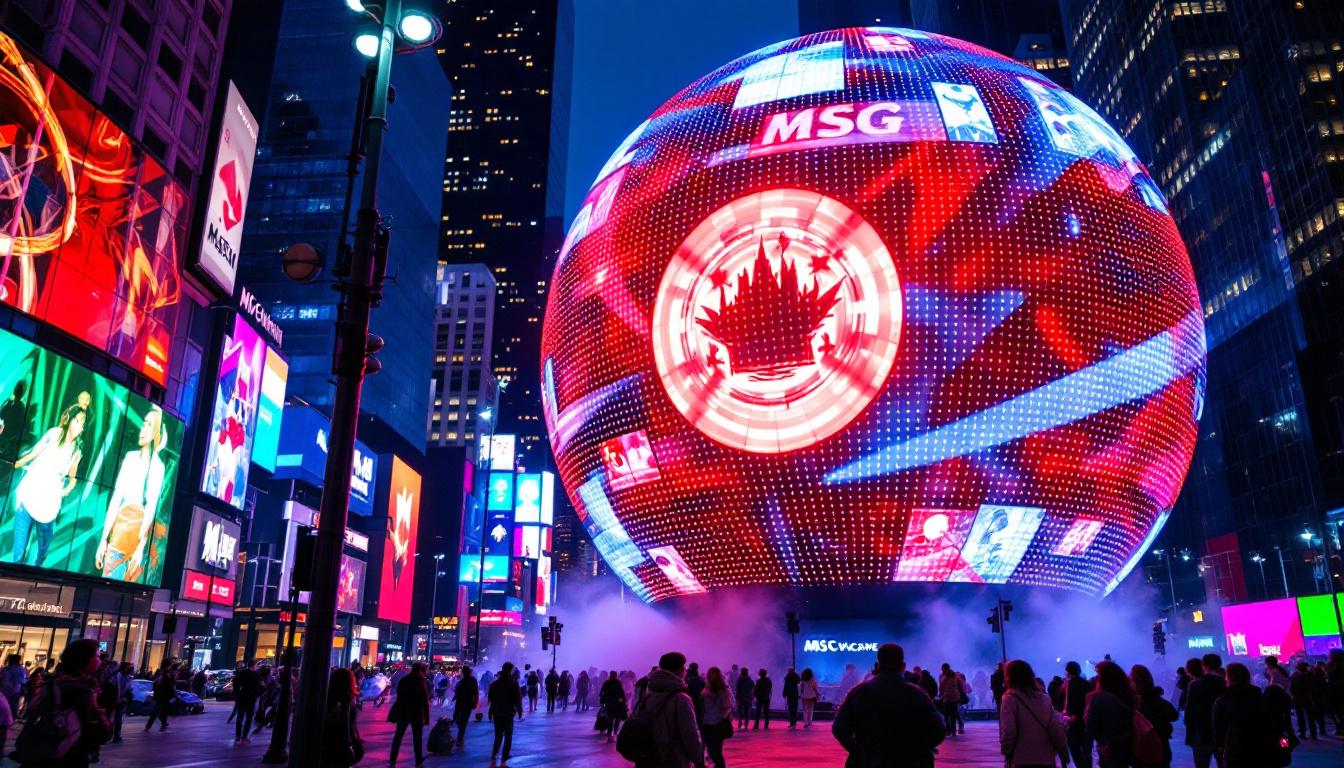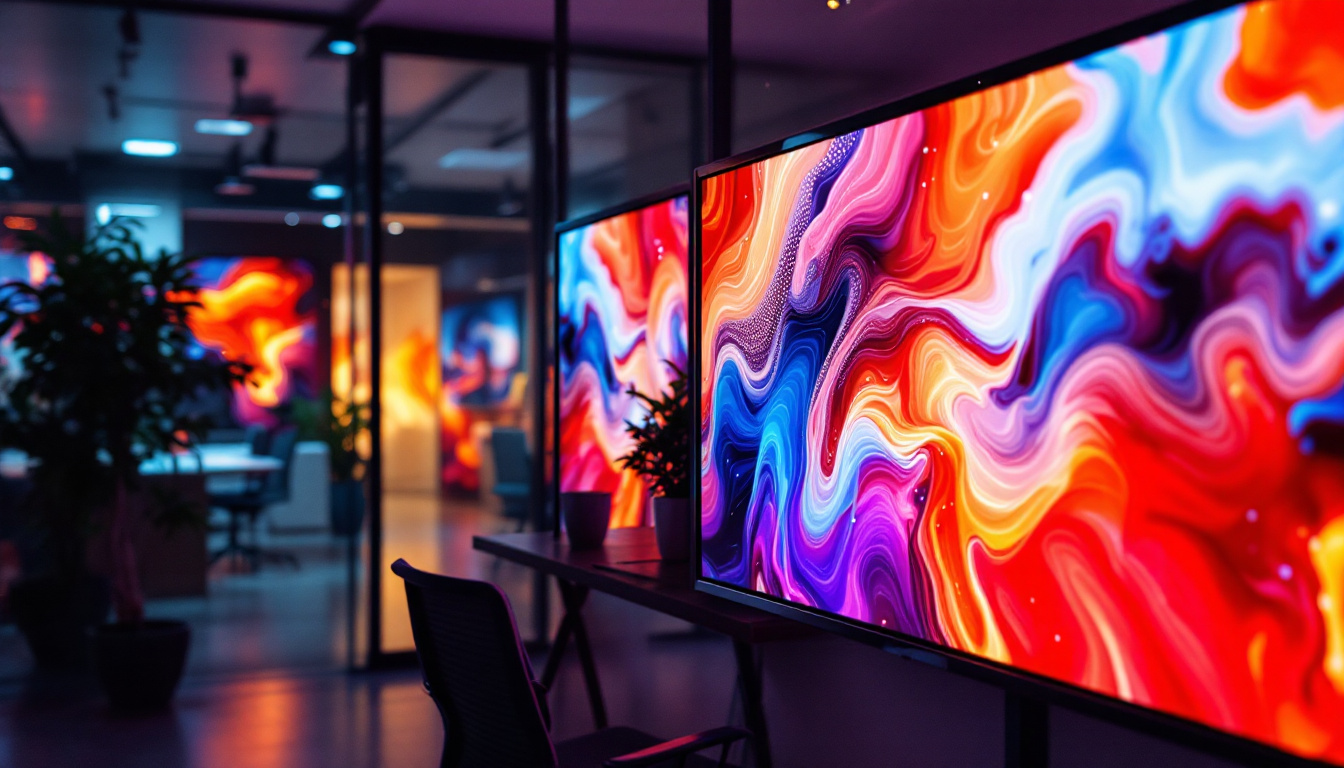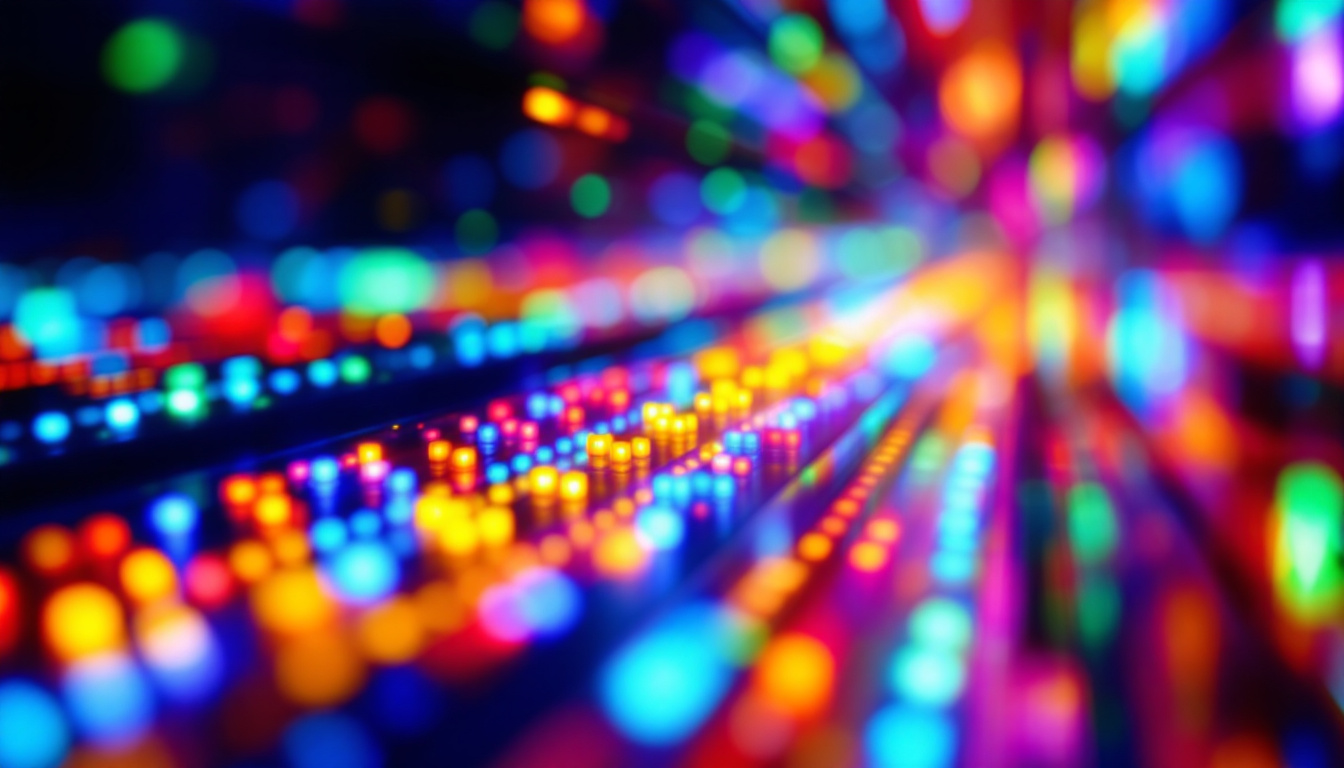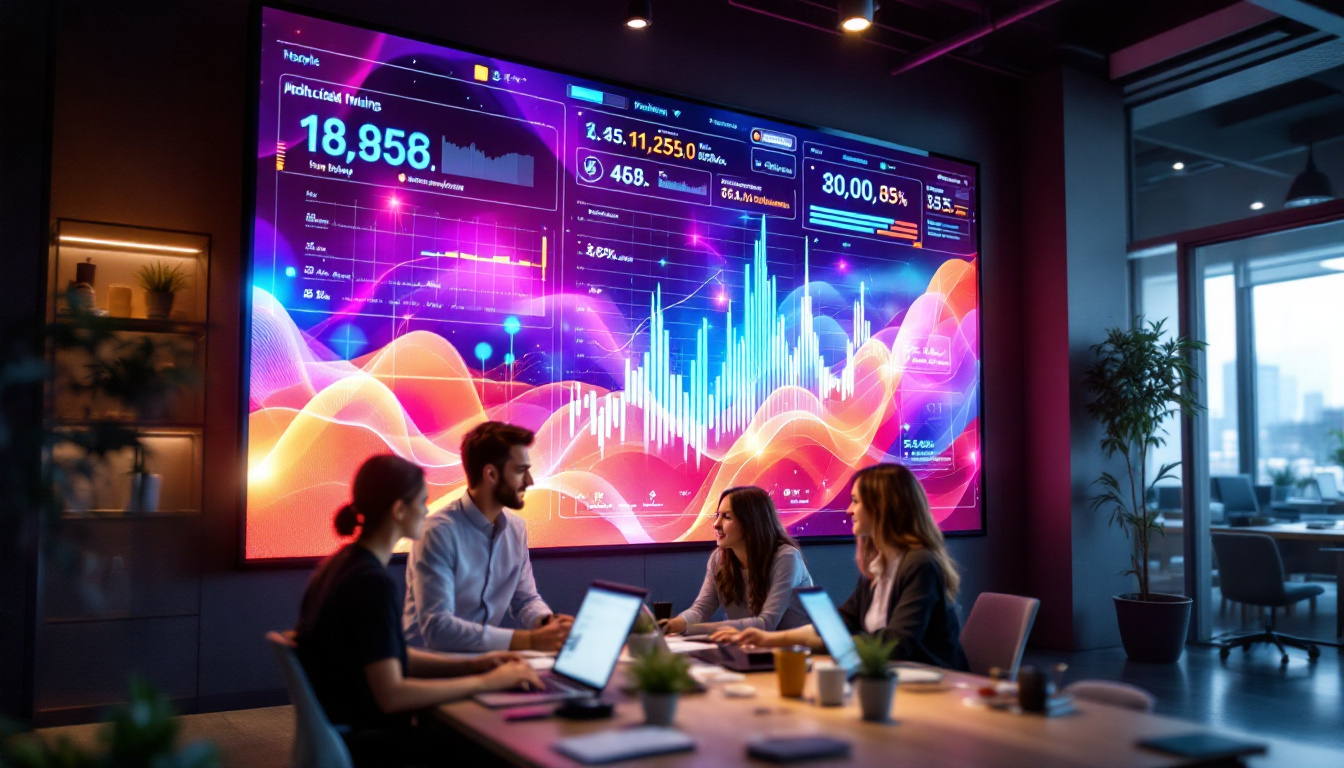In the realm of modern technology, LED displays have become ubiquitous, transforming how information is presented across various sectors. From advertising billboards to television screens and computer monitors, these displays have revolutionized visual communication. This article delves into the intricacies of LED displays, exploring their technology, applications, and advantages.
Understanding LED Technology
Light Emitting Diodes (LEDs) are semiconductor devices that emit light when an electric current passes through them. This technology has significantly evolved over the years, leading to the development of LED displays that are widely used today. The versatility of LEDs has revolutionized various industries, from lighting to digital signage, and their efficiency has made them a preferred choice in many applications.
The Basics of LED Functionality
At its core, an LED consists of a chip made from a combination of materials that produce light when energized. When electrons move across the semiconductor junction, they release energy in the form of photons, which is perceived as light. The color of the light emitted depends on the materials used in the semiconductor. This phenomenon is known as electroluminescence, and it is the fundamental principle that makes LEDs so effective. The efficiency of LEDs in converting electrical energy into light is far superior to traditional incandescent bulbs, leading to lower energy consumption and longer lifespans.
In LED displays, multiple LEDs are arranged in a grid to create images and text. Each pixel in an LED display is typically made up of red, green, and blue (RGB) LEDs, which can be combined in various intensities to produce a wide spectrum of colors. This capability allows for vibrant and dynamic visuals, making LED displays ideal for various applications. The rapid response time of LEDs also enables smooth video playback and real-time updates, which is particularly beneficial in environments such as sports arenas and concert venues where instant information is crucial.
Types of LED Displays
There are several types of LED displays, each designed for specific applications. The most common types include:
- Direct View LED Displays: These displays consist of individual LEDs that are visible from the front. They are commonly used in outdoor advertising and large-scale installations, such as billboards and digital signage. Their high brightness levels make them easily viewable in direct sunlight, enhancing their effectiveness in capturing audience attention.
- LED Backlit Displays: In these displays, LEDs are used to illuminate the screen from behind. This technology is prevalent in televisions and computer monitors, providing improved brightness and contrast. The use of LED backlighting allows for thinner screen designs and has become a standard feature in modern display technology, enhancing the overall viewing experience.
- Organic LED (OLED) Displays: OLED technology uses organic compounds to emit light, allowing for thinner and more flexible displays. They are known for their exceptional color accuracy and deep blacks. Because each pixel generates its own light, OLED displays can achieve true black levels by turning off individual pixels, resulting in stunning contrast ratios that are particularly appealing for high-definition content.
Another emerging type of LED technology is MicroLED, which utilizes microscopic LEDs to create displays that offer even greater resolution and efficiency. MicroLED displays promise to combine the best features of OLED and traditional LED technologies, providing high brightness, low power consumption, and the ability to create large screens without the drawbacks of burn-in that can affect OLED displays. As research and development continue in this area, MicroLEDs may soon redefine the landscape of display technology, offering new possibilities for everything from smartphones to large-scale video walls.
Applications of LED Displays
The versatility of LED displays has led to their adoption across various industries. Their ability to deliver high-quality visuals makes them suitable for numerous applications.
Advertising and Marketing
One of the most prominent uses of LED displays is in advertising. Digital billboards and signage can capture attention with vibrant colors and dynamic content. Advertisers can easily update their messages in real-time, allowing for targeted campaigns that can reach specific audiences based on time, location, and even weather conditions.
Moreover, LED displays can be programmed to show different advertisements at different times of day, maximizing visibility and engagement. This flexibility makes them a preferred choice for businesses looking to enhance their marketing strategies.
Entertainment and Events
In the entertainment industry, LED displays play a crucial role in enhancing the audience experience. Concerts, sports events, and theater productions utilize large LED screens to provide visuals that complement performances. These displays can show live feeds, graphics, and animations, creating an immersive environment for attendees.
Furthermore, LED walls are often used in festivals and exhibitions, allowing for stunning visual presentations that captivate audiences. The ability to create large-scale visuals with high brightness and contrast makes LED technology indispensable in the entertainment sector.
Corporate and Educational Use
LED displays are increasingly being used in corporate settings for presentations, meetings, and conferences. Their ability to display high-resolution content ensures that information is conveyed clearly, even in large rooms. Interactive LED displays also facilitate collaboration, allowing multiple users to engage with the content simultaneously.
In educational institutions, LED displays serve as effective teaching tools. They can be used to present lessons, display educational videos, and facilitate interactive learning experiences. The vibrant visuals help maintain student engagement and enhance information retention.
Advantages of LED Displays
The popularity of LED displays can be attributed to their numerous advantages over traditional display technologies. Understanding these benefits can help in making informed decisions when selecting display solutions.
Energy Efficiency
One of the most significant advantages of LED displays is their energy efficiency. Compared to traditional incandescent or fluorescent displays, LEDs consume significantly less power. This not only reduces operational costs but also minimizes the environmental impact associated with energy consumption.
Furthermore, LED technology generates less heat, which contributes to lower cooling costs in large installations. This energy efficiency makes LED displays an attractive option for businesses looking to reduce their carbon footprint while maintaining high-quality visuals.
Longevity and Durability
LED displays are known for their long lifespan, often lasting up to 100,000 hours or more. This longevity translates to lower maintenance and replacement costs over time. Additionally, LEDs are more resistant to shock and vibration compared to traditional display technologies, making them suitable for various environments, including outdoor settings.
The durability of LED displays also means they can withstand harsh weather conditions, making them ideal for outdoor advertising and signage. This resilience ensures that businesses can rely on their displays for extended periods without frequent repairs or replacements.
High-Quality Visuals
LED displays are renowned for their exceptional image quality. They offer high brightness levels, vibrant colors, and excellent contrast ratios, ensuring that content is displayed clearly and attractively. This quality is particularly important in applications where visual impact is crucial, such as advertising and entertainment.
Moreover, LED displays can achieve high resolutions, making them suitable for detailed graphics and text. This capability allows for a more engaging viewer experience, whether in a corporate presentation or a live concert.
Challenges and Considerations
While LED displays offer numerous advantages, there are also challenges and considerations that potential users should keep in mind. Understanding these factors can help in making informed decisions regarding the implementation of LED technology.
Initial Costs
One of the primary challenges associated with LED displays is their initial cost. While prices have decreased over the years, high-quality LED displays can still represent a significant investment. Businesses must weigh the upfront costs against the long-term benefits, such as energy savings and durability.
For smaller businesses or organizations with limited budgets, financing options or leasing agreements may be worth exploring. This approach can help mitigate the initial financial burden while still providing access to advanced display technology.
Technical Expertise
Implementing LED display technology may require technical expertise, particularly for larger installations. Proper installation, calibration, and maintenance are essential to ensure optimal performance. Organizations may need to invest in training or hire professionals to manage these aspects effectively.
Furthermore, understanding the software and content management systems that drive LED displays is crucial. Users should be prepared to invest time in learning how to create and manage content effectively to maximize the display’s potential.
Environmental Considerations
While LED displays are generally more environmentally friendly than traditional display technologies, there are still considerations regarding their production and disposal. The manufacturing process for LEDs involves the use of certain materials that can be harmful to the environment if not handled properly.
Organizations should consider recycling programs and proper disposal methods for obsolete displays to minimize their environmental impact. Additionally, choosing manufacturers that prioritize sustainable practices can further enhance the eco-friendliness of LED display solutions.
The Future of LED Displays
The future of LED display technology looks promising, with ongoing advancements and innovations on the horizon. As technology continues to evolve, several trends are likely to shape the landscape of LED displays in the coming years.
Advancements in Resolution and Size
As consumer demand for higher resolution and larger displays grows, manufacturers are continuously pushing the boundaries of LED technology. The development of microLED and miniLED technologies is paving the way for displays that offer even finer pixel densities and improved color accuracy.
These advancements will enable the creation of larger, seamless displays that can be used in various settings, from home theaters to expansive outdoor advertising. The potential for customized sizes and shapes also opens up new possibilities for creative applications.
Integration with Smart Technology
The integration of LED displays with smart technology is another trend that is gaining traction. As the Internet of Things (IoT) continues to expand, LED displays can be connected to smart systems for enhanced functionality.
For instance, displays can be programmed to change content based on real-time data, such as weather conditions or audience demographics. This level of interactivity and responsiveness can significantly enhance the effectiveness of advertising and information dissemination.
Focus on Sustainability
As sustainability becomes a priority for businesses and consumers alike, the LED display industry is also shifting towards more eco-friendly practices. Manufacturers are exploring ways to reduce the environmental impact of production and improve the recyclability of LED products.
Additionally, energy-efficient designs and materials are being prioritized to further enhance the sustainability of LED displays. This focus on environmental responsibility will likely shape the future of the industry, attracting consumers who value eco-friendly solutions.
Conclusion
LED displays have undoubtedly transformed the way information is conveyed and experienced across various sectors. Their unique technology, versatility, and numerous advantages make them an essential component of modern visual communication. While challenges exist, the ongoing advancements in LED technology promise a bright future for displays, paving the way for even more innovative applications.
As industries continue to embrace LED displays, understanding their functionality, applications, and potential challenges will be crucial for making informed decisions. Whether used for advertising, entertainment, or education, LED displays are set to remain at the forefront of visual technology, delivering exceptional experiences for audiences worldwide.
Discover Cutting-Edge LED Displays with LumenMatrix
Ready to elevate your visual communication with the latest in LED display technology? Look no further than LumenMatrix, where innovation meets excellence. Our diverse range of LED display solutions, from Indoor and Outdoor LED Walls to specialized displays for Vehicles, Sports, and even Custom configurations, is designed to captivate and engage your audience. Embrace the future of digital signage with LumenMatrix and transform your message into an unforgettable visual experience. Check out LumenMatrix LED Display Solutions today and see the difference for yourself.

